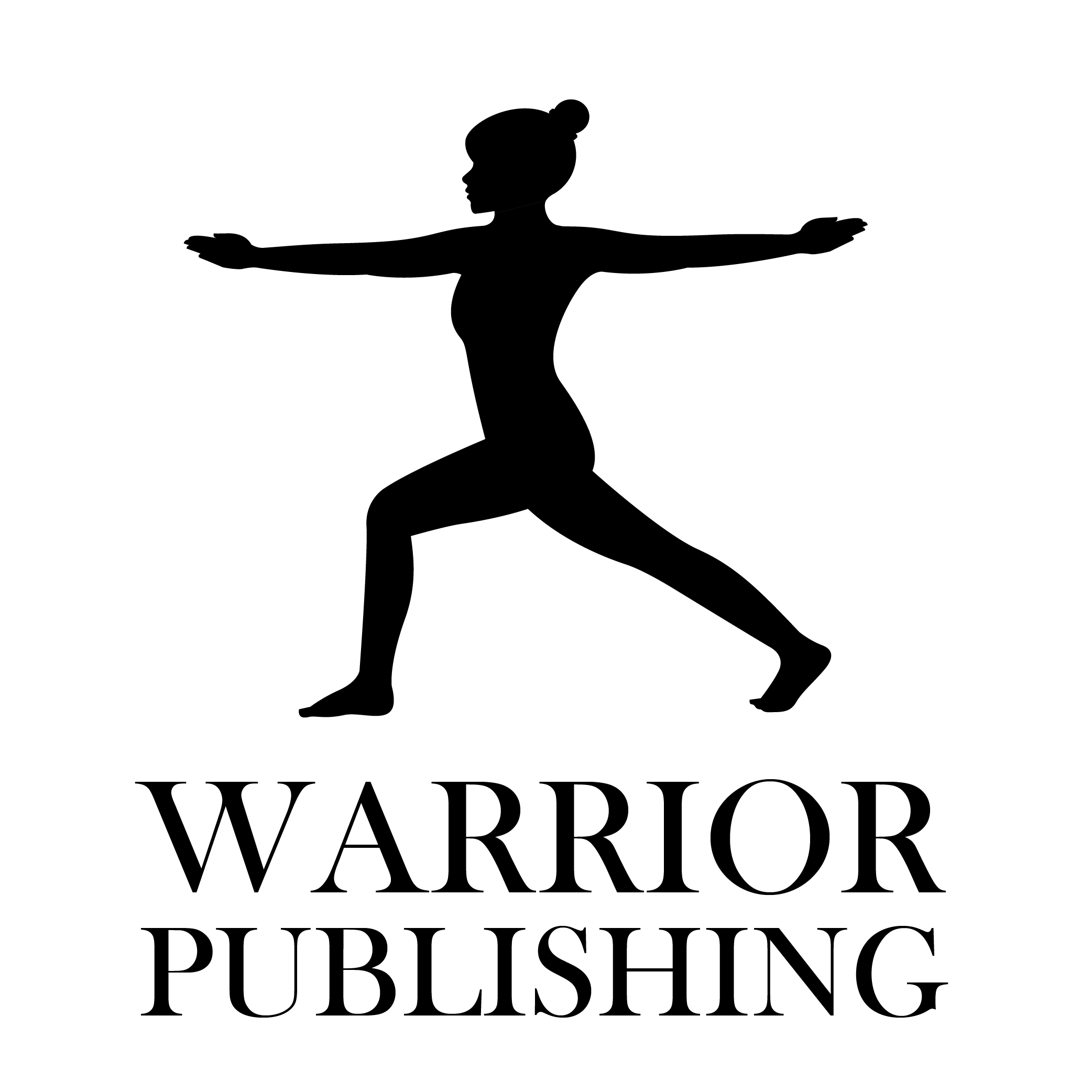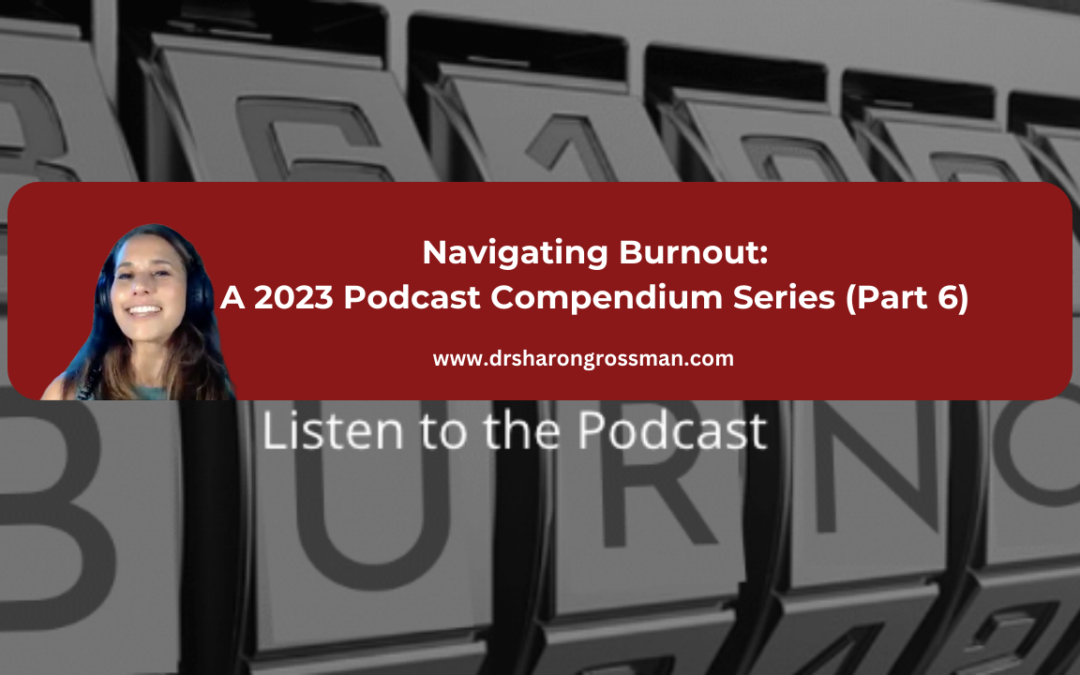Digital Burnout: Navigating the Challenges of Constant Connectivity
In today’s hyper-connected world, the digital age has brought both convenience and complexity to our lives. While technology has revolutionized the way we work, communicate, and stay informed, it has also given rise to a new phenomenon: digital burnout. This article delves into the ever-relevant issue of burnout in the digital age and offers practical insights, drawn from expert discussions on the “Decode Your Burnout” podcast series, on how to prevent and manage this modern-day challenge.
This is the sixth and final segment of the 2023 wrap-up series of the podcast. To check out any of the previous articles, explore the following:
- Part 1: Understanding Burnout: Unraveling the Threads of Burnout, Distinguishing it from Depression, and Exploring its Multifaceted Impact on Our Lives
- Part 2: Personal Growth and Overcoming Adversity: Celebrating Stories of Transformation, Resilience, and the Pursuit of Excellence Against All Odds
- Part 3: Unlocking Leadership and Workplace Wellness: Lessons from ‘Decode Your Burnout’ Podcast Series
- Part 4: Thrive: Unveiling the Keys to Health, Sensitivity, and Self-Care in the Battle Against Burnout
- Part 5: Unleashing the Power of Emotional Intelligence
Digital Burnout Symptoms
We are in a digital age where staying plugged in 24/7 has become the norm. But have you ever stopped to consider the toll this constant connectivity might be taking on your mental and emotional well-being? Like with anything else we indulge in that’s out of balance, becoming absorbed by our screens can lead to burnout, but a very unique and modern manifestation of the classic burnout syndrome.
Digital burnout manifests in ways that might seem subtle at first, but over time, they can have a profound impact. If you find yourself feeling increasingly drained, overwhelmed, and emotionally fatigued after staring at a screen all day, these might be early warning signs. It’s not just the time you spend on the screen. It’s the notion that you have access to work all the time and wherever you go. That persistent feeling of being ‘always on,’ where you can’t escape the demands of work, social media, and the constant flood of information is what culminates in chronic stress and burnout.
What’s the big deal? You’ve done it for years, right? Well, social media’s relentless scroll, the incessant email notifications, and the pressure to be perpetually available can take a toll. So if you’re experiencing poor sleep, reduced productivity, strained relationships, and a nagging sense of discontent, you’re likely in burnout territory.
Real-Life Stories
Take Dave Lukas, for instance, who in his podcast episode, “Build Your Wealth in 12 minutes a day,” shared how constant digital distractions left him feeling perpetually frazzled. He struggled to focus on what truly mattered and realized that his digital habits were contributing to his burnout.
Or consider the experiences of professionals discussed in “The Burnout Panel on Productivity Power-Up.” We recounted how the relentless ping of emails and messages can leave you feeling drained, making it tough to find the motivation to tackle important tasks.
There are no shortages of examples of how our unrestricted digital access takes over our lives. You might be feeling it right now as you read this in fact. So given this is so baked into our lives, what can we do about it to prevent burnout? Or, if you’re already feeling the effects of burnout, how can you recover?
Tips for Prevention and Recovery
It’s not all doom and gloom. Recognizing the symptoms is the first step toward prevention and recovery. Recently, I noticed a decline in my eyesight and I attribute it in part to aging, but mostly to overuse. I took some time away from the screen, did some eye exercises, took walks outside, and by some miracle, I recovered a bit of that eyesight. At least the blurry night vision dissipated.
Set boundaries on your screen time. I do this with my children, but I’m much more lax about my own screen time restrictions, at least when it comes to my work. I don’t watch television during the week and seldom on weekends. But on any given day, you can find me for hours on my computer working.
As discussed by experts on the podcast, finding a balance that works for you is crucial. Remember, it’s not about abandoning technology altogether; it’s about using it consciously and purposefully to enhance, rather than detract from, your well-being.
The Role of Social Media
We’ve mentioned social media, a part of our culture that most people have a hard time living without. And while social media is a great place to connect with friends and family, share your vulnerabilities, and celebrate your wins, it’s also a breeding ground for comparison.
Whether it’s the picture-perfect vacation photos, the seemingly endless accomplishments, or the carefully crafted highlight reels of our friends and acquaintances, the constant exposure to others’ achievements can leave us feeling inadequate and fuel the flames of digital burnout. Kay Allison‘s podcast episode, “Are you drinking to take the edge off?” delves into how the relentless comparison on social media can be a major trigger for burnout. The pressure to keep up with the virtual Joneses can be overwhelming.
Fear of missing out (FOMO) is another insidious aspect of social media that contributes to digital burnout. The constant stream of exciting events, parties, and experiences showcased on platforms like Instagram can create a sense of inadequacy and anxiety. Nicky Lowe‘s episode, “Are You Gaslighting Yourself?” explores how FOMO can lead individuals to overcommit, overextend themselves, and ultimately succumb to burnout.
For many, social media isn’t just a pastime; it’s a virtual stage where we perform our lives. The pressure to maintain a polished online presence can be overwhelming. Amanda McKinney, in “Lead by Example: How to Create a Bulletproof Culture at Work,” emphasizes how the expectation to be constantly connected and available on social media can lead to exhaustion. It’s as if we’re trapped in a never-ending performance, leaving little room for authenticity and genuine connection.
Take a step back. Remind yourself that social media is a tool. Ask yourself, “What am I using it for” and “Is it helpful or hurtful?” This can help you begin to make better decisions about just how much time you dedicate to scrolling and whether this is feeding you or not.
Strategies for Digital Detox
If you’re experiencing digital burnout, you might recognize the need for a little digital detox, but as much as that might be a “nice to have,” it often seems daunting, if not impossible. But a digital detox isn’t about completely abandoning technology; it’s about finding a healthy balance between the virtual and real worlds. Dr. Michael Amster, in his podcast episode “From Awful to Awe,” emphasizes the importance of moments of wonder and disconnecting from digital distractions to regain a sense of awe and joy in life.
Balance here is key. We’ve already mentioned the importance of setting boundaries. Let’s explore some additional strategies to achieve balance in our usage of technology.
Digital Sabbaticals
Consider taking regular digital sabbaticals, much like a vacation for your mind. Bill Gallagher, in “When Even Though You Get What You Want, You’re Miserable,” talks about the transformative power of unplugging for a set period. During these breaks, you can engage in analog activities like reading a physical book, taking long walks, or simply enjoying uninterrupted conversations.
Mindful Consumption
Practice mindful consumption of digital content. Instead of mindlessly scrolling through your social media feeds, allocate specific time slots for checking emails, catching up on news, or engaging in online activities. This approach, discussed in various episodes, can help you regain control over your digital life.
Prioritizing Self-Care
Remember that self-care is not a luxury; it’s a necessity. Dr. Betsy Guerra, in “How to Rise Above Adversity in 5 Steps,” underscores the importance of self-care as a means to prevent and overcome burnout. Allocate time for activities that rejuvenate your mind, body, and soul, and use technology to support your well-being, rather than hinder it.
The Power of the Pause
Sometimes, all it takes to prevent digital burnout is a momentary pause. In the episode “Redefine Work and Play” with Mike Montague, the idea of stepping back and reassessing your digital habits is explored. Take a breath, evaluate whether your digital activities align with your goals and values, and make adjustments accordingly.
Leveraging Technology for Wellness
While technology can be a major contributor to digital burnout, we don’t want to paint it as all bad. In fact, it can serve as a valuable ally in our quest for balance and well-being. Again, the key here is in the balance.
There are apps designed specifically to help us manage our screen time and digital habits. Some of these apps can track your usage, set daily limits, and even lock you out of certain apps or websites during designated periods. By using these tools mindfully, you can regain control over your digital life.
Digital platforms also offer a wealth of mindfulness and meditation apps that can help alleviate stress and promote relaxation. These apps guide users through meditation sessions, breathing exercises, and stress-reduction techniques, which can be particularly helpful in combating burnout.
Emerging Tech Trends
The digital landscape is constantly evolving, and emerging tech trends can either exacerbate or alleviate digital burnout. For example, the rise of remote work has been accelerated by technological advancements. While remote work offers flexibility, it can also blur the boundaries between work and personal life, potentially leading to burnout. Understanding how to establish clear boundaries and maintain work-life balance in a remote work environment is crucial.
Artificial Intelligence (AI) is another trend that can impact digital burnout. AI-driven tools can automate tasks, making work more efficient and reducing digital stress. However, they can also lead to a constant feeling of being monitored and evaluated, potentially contributing to burnout. It’s essential to strike a balance between using AI to enhance productivity and maintaining a sense of autonomy and well-being.
Conclusion
Technology is a double edged sword. On the one hand, it allows us to be more connected, efficient, and informed than ever before. On the other, it can lead to digital burnout if not managed wisely.
The key takeaway is clear: balance is essential. Recognize the signs of digital burnout, set boundaries, take breaks, and prioritize self-care. Use technology as a tool for well-being, not as a constant distraction. Stay informed about emerging tech trends and adapt accordingly.
Remember that you have the power to decode your burnout. By understanding the dynamics of the digital age and taking proactive steps to protect your well-being, you can lead a healthier, more balanced life in this hyper-connected world.
Ready to take control of your digital life? Explore the full “Decode Your Burnout” podcast series for expert insights and real-life stories. Your journey to digital well-being begins now.
—————————-
Burned out? Let me coach you to go from Exhausted to Extraordinary.
—————————-
Do you want to get my Burnout Checklist for free?
I’ve created a checklist to help you identify signs of burnout and steps to take to get immediate results. Curious?

Dr. Sharon Grossman, AKA the Burnout Doc, is a clinically trained psychologist and subject matter expert in burnout and mental health. Associations and Fortune 500 companies hire her to be their closing keynote speaker, to help their members and executives crack the code on burnout, and create custom-tailored solutions for recovery.
Over the past 20 years, Dr. Sharon has been helping high achievers who are struggling with anxiety, overwhelm, and burnout go from exhausted to extraordinary by better understanding how their brain works and how they can design and run their programming on purpose to live the kind of life they want to live. She is the author of several books on burnout and mindset and host of the Decode Your Burnout podcast. Through her speaking, training, and coaching, she helps organizations keep their top talent.


Recent Comments